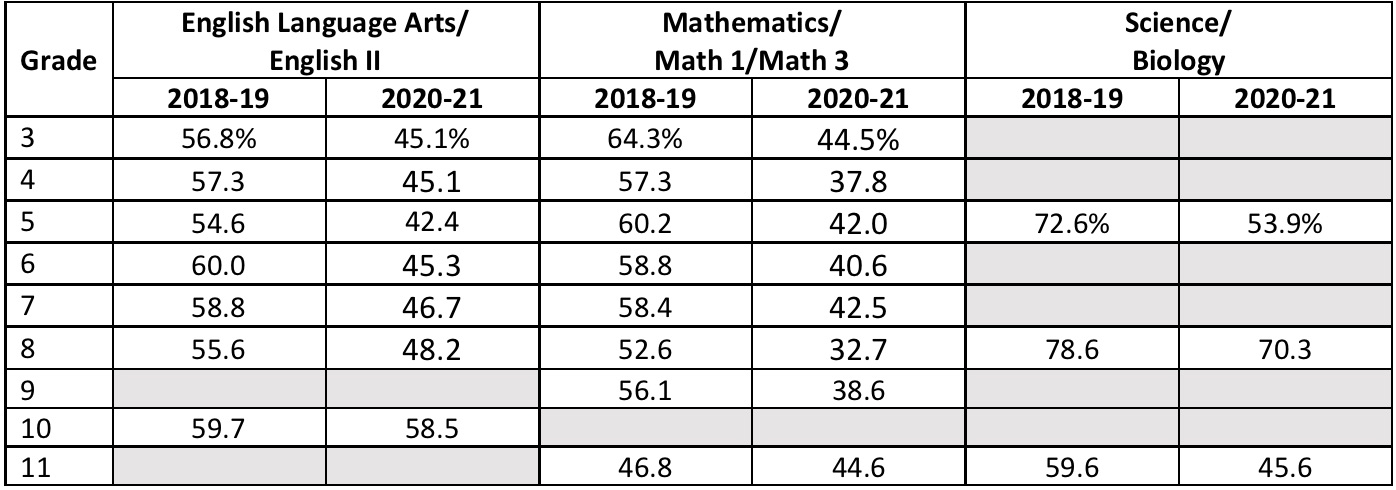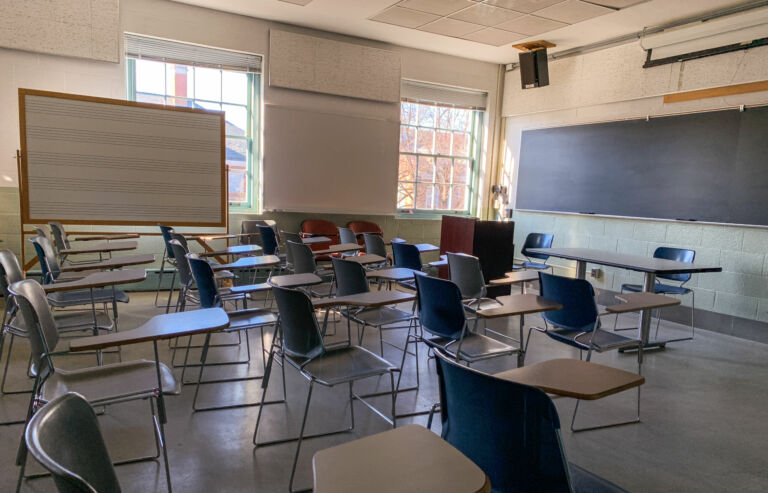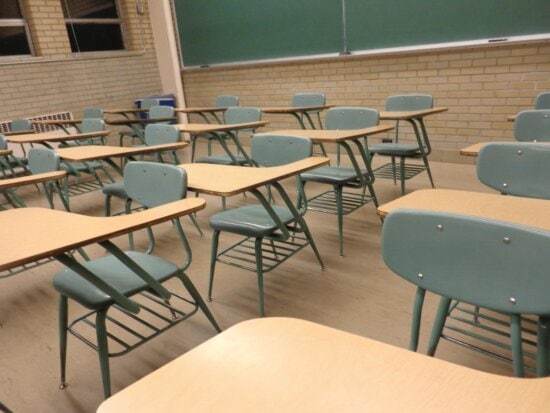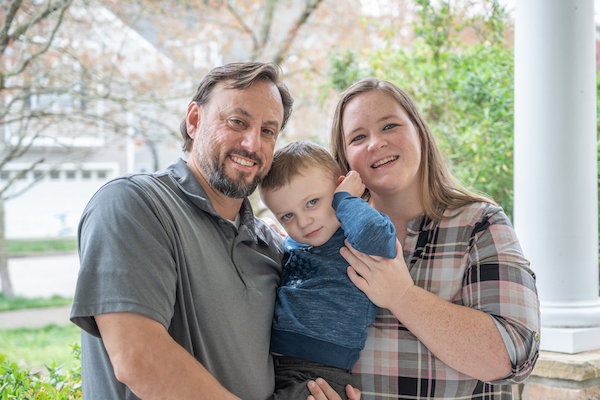- Proficiency rates on most state English, math, and science tests plummeted in 2021
- Cooper consistently failed to weigh the costs and benefits of imposing restrictions on in-person learning in 2020
- The broad educational, psychological, social, and economic effects of pandemic-era education policies will take years to understand fully
Last week, state education officials released 2020-21 testing results and graduation rates for all North Carolina public schools. According to the measures provided, a year of pandemic schooling lowered test scores across the board. It’s not time to panic. But it’s time for an all-hands-on-deck approach to addressing the short- and long-term effects of learning loss in North Carolina public schools.
The Trump administration granted state testing waivers for the 2019-20 school year, and North Carolina public school officials promptly canceled statewide testing scheduled for spring 2020. As a result, one must compare the 2020-21 results to those from the 2018-19 release. DPI testing and accountability staff do not recommend comparing student performance results from 2019 to 2021 due to the gap year, variations in participation rates, modifications to the testing calendar, and instructional differences between the two years. But such comparisons are (like me) inevitable, irresistible, and imperfect.
North Carolina End-of-Grade and End-of-Course Tests: Percentage proficient (Level 3 and above), 2018-19 and 2020-21

High school English scores barely budged. Otherwise, proficiency rates in English, math, and science plummeted in nearly every subject and grade level. Whereas in 2019, North Carolina public school officials could boast that a majority of its students were proficient on state standardized tests, today only three of the groups subject to federal testing requirements hold that distinction. Across all subjects and grade levels, 45.4% of North Carolina students failed to earn grade-level proficiency or Level 3 and above. Only 29.6% met the “career and college ready” standard or Level 4 and above.
Proficiency rates stagnated long before the pandemic, so we can assume that instructional changes implemented in response to COVID-19 were the driving force behind last year’s slide. Beyond that, we have many unanswered questions. For example, what aspect of the pandemic led to the decline? Some possible factors include the quality of remote learning, student absenteeism, teacher behaviors and characteristics, and levels of parental support. Such questions will fuel empirical studies for years to come.
But elected officials do not need to know the exact cause of the decline in student performance to know the pitfalls of mandating districtwide remote learning for an extended period without acknowledging tradeoffs.
By exercising near-unilateral power over the pandemic response in 2020, Gov. Roy Cooper is the elected official most responsible for these distressing outcomes. As my John Locke Foundation colleagues and I have pointed out repeatedly over the last year and half, Cooper consistently failed to assess the costs and benefits of imposing restrictions on in-person learning. Cooper and his appointed leadership at the North Carolina Department of Health and Human Services prioritized the short-term, hoped for benefit of mitigating the transmission of COVID-19, even though healthy children and adults are at low risk for developing complications from a coronavirus infection. Seldom did they acknowledge the potential long-term harms to student learning and emotional wellbeing. The test scores released last week reflect the former. I am confident that subsequent research will confirm the latter.
For the state of North Carolina, the cumulative learning loss will derail the state economy for decades to come. As the economy absorbs lower-skilled and less productive workers into the workforce, state and national productivity and entrepreneurship will suffer, potentially producing billion-dollar GDP losses for the state and trillion-dollar losses for the nation. The losses will not be evenly distributed across counties and regions. North Carolina’s already thriving urban and suburban school districts will be able to recover much faster than low-wealth communities, predominantly in rural counties.
Likewise, the pandemic worsened learning conditions for populations that were already struggling. Test scores indicate that children from particular racial and ethnic subgroups were more likely to sustain learning losses, exacerbating an already wide achievement gap in the short term and the wage and skills gap in the long term. The same was true for low-income and special-needs students. In 2021, only 28.8% of economically disadvantaged students and 15.2% of students with disabilities attained grade-level proficiency on state tests. Fortunately, these parents have access to publicly funded private-school scholarship programs that allow them to find schools that meet the diverse needs of their children. I cannot overstate the urgency of expanding these programs to address learning loss among these and other vulnerable populations.
Of course, to address learning loss through the expansion of school choice and other measures, one must acknowledge that learning loss is real. Earlier this year, North Carolina Association of Educators (NCAE) president Tamika Walker Kelly called learning loss a “false construct.” State test scores released last week demonstrated that it is far from false. Learning loss is the defining characteristic of student performance during the pandemic, producing broad educational, psychological, social, and economic effects that will take years to understand fully.


